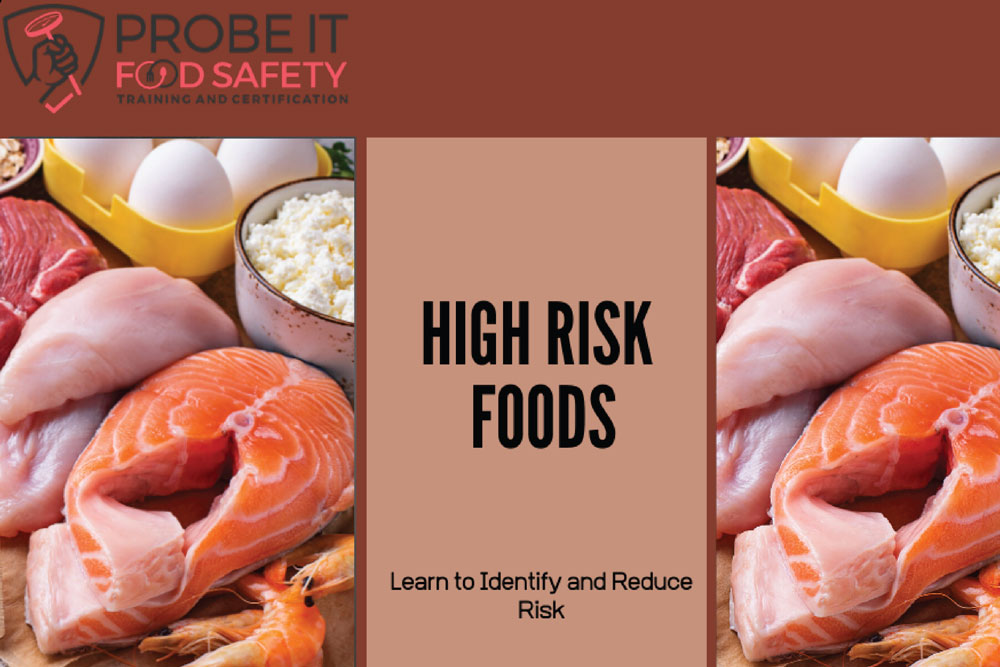High Risk Foods

Avoiding food poisoning can be hard, especially when you are not aware of which foods bacteria can grow more rapidly than in others. If you can not identify these high risk foods, you will also not be able to reduce the risk of food poisoning by handling these foods safely.
The first step is to educate yourself on which foods are at high risk. The Ontario Ministry of Health declares that dairy products (such as milk, cheese, yogurt etc), eggs, meat, poultry and seafood are high risk foods. These foods need to be cooked at high temperatures to kill any potential bacteria because they support growth otherwise. This is in contrast to the low risk foods that do not support bacteria growth, which they confirm are: fresh fruits and vegetables, bread, most baked goods, candy, pickles, honey, jam and preserves, syrups and vinegars.
In order to reduce the risk of food poisoning, there are steps you need to follow. It is important to clean and sanitize your hands, the utensils and the equipment before and after handling high risk foods. Also, it is important to clean the produce before consumption. The reason why you are cleaning everything is to keep any bacteria on the high risk foods separate from other foods. This also applies when you are storing the food; it should all be kept separate.
High risk foods are meant to be cooked at high temperatures. These temperatures vary depending on the specific type of food. You must keep the food out of the danger zone to ensure it is safe to eat. This also applies when refrigerating the foods: make sure it is not in the danger zone, but 4 degrees or colder.
To learn more about how to handle high risk foods safely, take our food handler certificate course and our food delivery safety course to learn food safety for on the go!
Related Posts
3 Advantages of Food Safety Training
Food safety training is a crucial aspect of keeping your business afloat. There are many…
Read More >>3 Benefits of National Food Safety Training Program
Food establishments are held at a higher standard by the government, especially by national health…
Read More >>How You Can Apply for Food Safe Level 1
Are you looking for a way to obtain a Food Safe Level 1 online certification?…
Read More >>